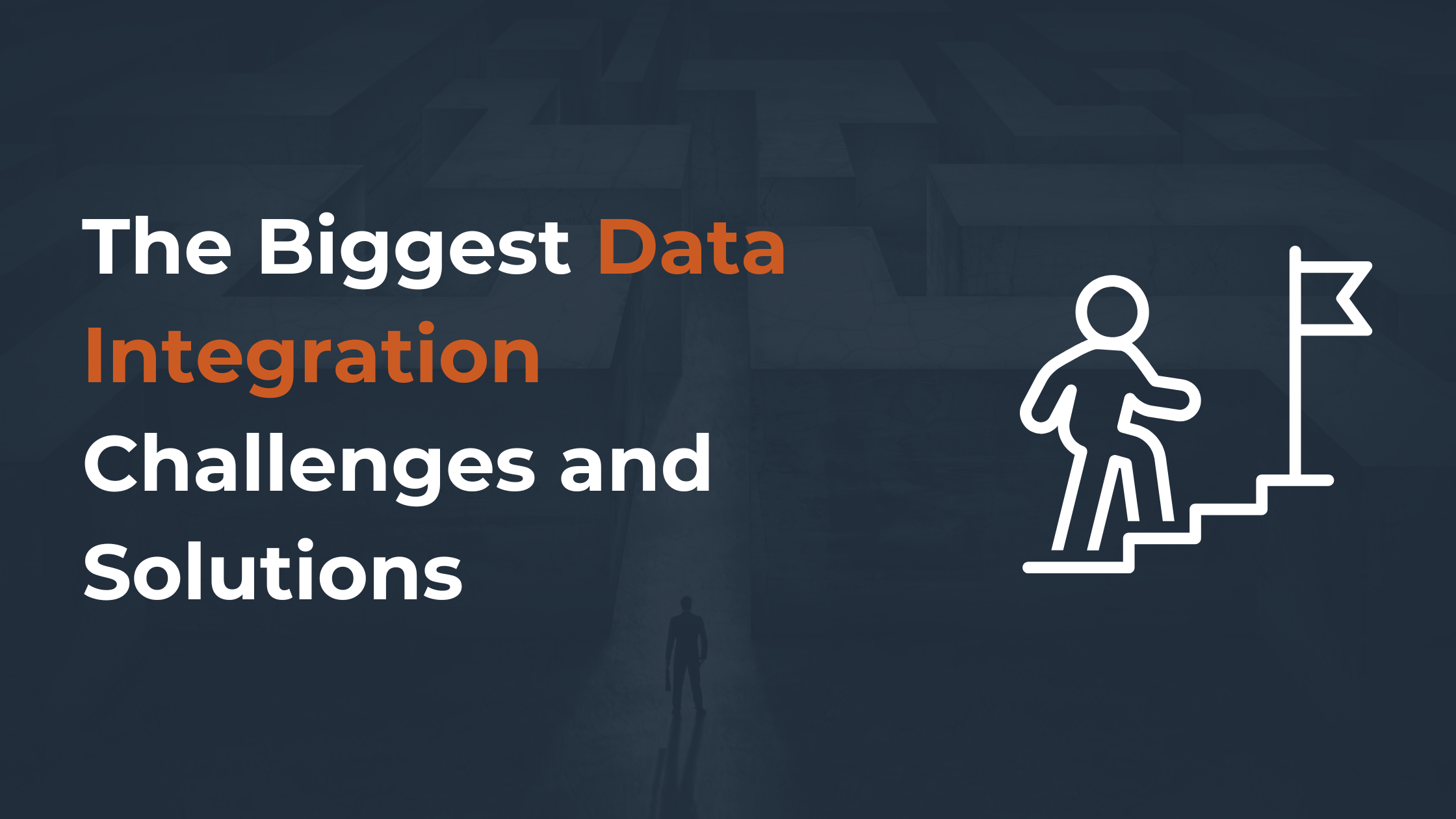3. Different Data Formats
Businesses gather data in all kinds of formats—CSV, Excel, JSON, etc. But when you’re storing the same info in multiple formats, you’re looking at rising storage costs, potential financial losses, and a big mess of inconsistent data.
Different formats are housed differently, whether it's on your own servers or in the cloud. And don’t even get started on unstructured data—it’s like a wild garden, growing unpredictably and hard to manage. Trying to query, edit, retrieve, or integrate data in a bunch of different formats? That’s a serious headache.
Solution
Here’s a data integration solution how to bring order to the chaos:
- Pick a standard format and make it the rule across the company.
- Choose data integration tools that play nicely with different file formats.
- Implement processes that convert various formats into a unified, structured format for smoother integration.
4. Infrastructure Management
When it comes to data integration, you need a rock-solid infrastructure to ensure smooth data extraction, transformation, and loading. But don't forget to prepare for the unexpected—system outages, network hiccups, or hardware failures can throw a wrench in your process, leading to delays, data loss, or even errors.
Your infrastructure isn't just about hardware, though. It also includes the software tools and platforms you rely on to move data through each stage of integration. Updates or changes to these tools can disrupt workflows and require some fine-tuning to keep things running smoothly.
Solution
Keeping your infrastructure in top shape means staying proactive with these steps:
- Before kicking off the integration, do a full check of your ecosystem—hardware, network connections, and data integration tools. Make sure everything is reliable and ready for action.
- Invest in flexible, scalable, and automated integration tools that can grow and adapt to your needs and handle any changes in the systems you’re working with.
5. Poor Data Quality
Bad data is like a faulty compass—it leads you in the wrong direction. When your data is invalid or incompatible, the analytics become unreliable, which can steer your decisions down the wrong path.
Some of the data integration challenges that come with poor data quality include dealing with duplicate records, the struggle to consolidate everything into one platform, and time-consuming processes. However, once your integration is in place, data collection becomes much smoother and more efficient.
Solution
Before diving into data integration, make sure your data is in top shape. Below is how to clean it up:
- Hunt down old or inaccurate data, like bounced email addresses or incorrect phone numbers, and fix them.
- Simplify your forms by removing unnecessary fields, and make sure your data collection processes conform with rules such as GDPR.
6. Unexpected Costs
Data integration can sometimes come with surprise price tags. The complexity of integrating various data sources and systems means that unexpected changes—like tweaks in data formats or system structures—can pop up after you've set everything up. When these changes happen, they require workflow adjustments, which can drain both time and resources.
These unforeseen costs can affect your budget and impact other ongoing projects. If not handled properly, they can decrease the value of your integration efforts, making it seem less cost-effective.
Solution
To stay ahead of surprise costs, a combination of smart planning and regular check-ups is key.
- Build a contingency budget to cover those "just in case" moments—whether it's system changes, unexpected issues, or delays. This cushion helps absorb extra costs without throwing off your entire project.
- Monitor your procedures to ensure seamless data integration. Track workflow performance, data quality, and tool usage to catch problems before they spiral into costly issues.
7. Data Accessibility
Data accessibility means having the right data at your fingertips, no matter where it’s stored. But when your data is scattered across different systems, databases, and locations, getting it all in one place for integration can be tricky.
Manual data curation—relying on human effort to gather and prepare data—slows things down and invites errors. And when your data volume and complexity increase, managing it by hand becomes a real nightmare.
Solution
Here’s where a blend of centralization and clear rules can save the day.
- Pull all your data into one place with a centralized storage system. This makes it simple to obtain and handle information.
- Establish clear policies for storing, managing, and accessing data. These guidelines ensure that everyone knows how to handle data, streamlining the integration process and improving accessibility.
8. Duplicate Data
Duplicate data is like that pesky extra guest at a dinner party—unexpected and unhelpful. Duplicates can sneak into your dataset from data entry errors, system glitches, or mismatched data formats and structures.
Having this one of data integration problems messes up your integrated data, making it inaccurate and slowing down decision-making. Plus, sorting out duplicate data eats up time and resources, complicating and driving up the cost of data integration.
Solution
Here’s how to tackle those duplicates:
- Data lineage helps you trace the journey of your data. By tracking this, you ensure your data remains accurate and complete.
- Use tools that encourage team collaboration and following established rules. These technologies make it easier to share data and catch duplicates early, preventing problems before they grow.
- Encourage open communication and teamwork within your company. When teams work together, they can spot and handle duplicate data faster, leading to cleaner, more reliable integrated data.
9. Real-Time Data Integration
For some business operations, waiting for data is like waiting for a train that never shows up—annoying and disruptive. Real-time data integration means capturing, processing, and integrating data the moment it’s created, so there’s no delay in getting the insights you need.
The challenge? Real-time integration is no small task. It has to manage the high volume and speed of incoming data without slowing down or causing errors. Without a solid plan, you’ll struggle to get timely insights, and that impacts your decisions.
Solution
Here’s how to stay on top of real-time data:
- Set up an event-driven architecture where actions are triggered by real-time data events. This structure enhances your ability to integrate data as it flows in.
- Use specialized tools that are designed to capture and integrate data in real time, ensuring your systems are always up to date for analysis.
- Stream processing allows you to deal with massive amounts of data in real time, analyzing it as it comes. This technique keeps everything running smoothly and provides insights when needed.
10. Data Security
As businesses collect more data, the common data integration challenges include the risk of security breaches and cyber-attacks. And when multiple people or teams are involved, you also open the door to insider threats, making data security and privacy even trickier.
Keeping customer trust intact is key, especially during the integration process. But coordinating who owns the data and agreeing on sharing rules—especially when dealing with external sources—adds a whole new level of complexity.
Solution
To safeguard your data during integration, follow these steps:
Choose an effective data integration platform that provides end-to-end security features.
- Set up real-time monitoring to catch any unauthorized access attempts right away.
- Use techniques like tokenization and encryption to protect personally identifiable information (PII).
- Frequently audit and update your security measures to stay in line with evolving threats.
- Make sure your processes align with regulations like GDPR to avoid costly missteps.
SyncMatters - Top Data Integration Solution
SyncMatters is your reliable solution for overcoming data integration challenges. With its robust iPaaS (Integration Platform as a Service), SyncMatters connects all your CRMs and business systems in one seamless workflow. Here’s how it helps:
- SyncMatters merges data from over 55 different CRMs, giving you a single, organized view of your customer interactions, sales, and marketing efforts, regardless of where the data originated.
- Say goodbye to manual data entry! SyncMatters automates the process of syncing data across platforms, ensuring that everything stays up to date, saving you time and reducing the risk of errors.
- It’s built to adapt. SyncMatters allows you to customize integrations based on your unique business needs, meaning it can grow with you as your systems evolve.
- By ensuring data consistency and removing duplicates, SyncMatters boosts the quality of your data, which leads to more accurate analysis and smarter business decisions.
- SyncMatters integrates security features to protect your data as it moves between platforms, ensuring compliance with data protection regulations like GDPR.
Whether you're handling data from various CRMs, databases, or cloud platforms, SyncMatters makes integration easy, reliable, and secure—helping you unlock the full potential of your data.








